Am e rica's Most Remarkable ou n de rs to Watch 2025
Shaping Smarter Systems:

Am e rica's Most Remarkable ou n de rs to Watch 2025
Shaping Smarter Systems:
Legacy in Operations Research and Innovation








neveryera,therearefounderswhodomorethanjustlaunchcompanies—theyignite
movements,inspiretransformation,andleavebehindablueprintforthefuture.
America’s Most Remarkable Founders to Watch 2025 isacelebrationofsuch individuals.Thesearethevisionarieswhohavesteppedbeyondconvention,takenbold risks,andredefinedtheindustriesthey’vetouched.Amongthem,onenamestandsoutfor hisquietbrilliance,enduringimpact,andremarkableversatility:RichardLarson.
TocallRichardLarsonafounderwouldbetounderstatethedepthofhisinfluence.Asa pioneeringmindwhoseworkhastranscendedtheboundariesofacademia,technology, andsocialadvocacy,Larsonrepresentsthekindofmultidimensionalleadershipthat definesthiseraofinnovation.Hisjourneyisonethatblendsintellectwithempathy, strategywithservice.Whetherbuildingframeworksineducationtechnologyor championingcausesrootedinethicsandsustainability,Larson’sendeavorsreflect purpose,precision,andhumanity
Whatmakeshimremarkableisn’tjustwhathe’saccomplished—buthow.Hisleadership isgroundedinvaluesthatendure:integrity,curiosity,compassion,andarelentlesspursuit ofprogressthatbenefitsmorethanthebottomline.Inaworldoftendrivenbyshort-term wins,Larsonremainsalong-viewthinker—focusingonsystems,legacies,andmeaningful impact.
Thiseditionhonorsfounderswho,likeLarson,areshapingtheAmericanbusinessand culturallandscapenotwithnoise,butwithsubstance.Theyarenotmerely disruptors—theyarebuildersofecosystems,championsofequity,andcatalystsof responsiblegrowth.
Aswespotlighttheremarkablefounders,RichardLarsonexemplifieswhatitmeansto leadwithvisionandcharacter.Hisworkservesasareminderthatentrepreneurshipatits bestisnotjustaboutinnovation—itisaboutintention.Itisaboutcreatingsomethingthat lasts,somethingthatmatters.
Weareproudtofeaturehisstoryinthisspecialedition.
Shaping Smarter Systems: Richard Larson's Legacy in Operations Research and Innovation
Editor-in-Chief
Deputy Editor
Managing Editor
Assistant Editor
Visualizer
Art & Design Head
Art & Design Assitant
Business Development Manager
Business Development Executives
Technical Head
Assitant Technical Head
Digital Marketing Manager
Research Analyst
Circulation Manager
Thanh Truong
Sam Carter
Alaya Brown
Maria Evans
Chris Carter
Millie Simon
Judy Smith
Phoebe Jacob
Aisha, Olivia
David Walker
Mia Rodricks
Helena Smith
Eric Smith
Richard Martinez


Follow us on www.facebook.com/thecioworld We are also available on RNI No.: MAHENG/2018/75953 www.x.com/thecioworld

Copyright © 2025 The CIO World, All rights reserved. The content and images used in this magazine should not be reproduced or transmitted in any form or by any means, electronic, mechanical, photocopying, recording or otherwise, without prior permission from The CIO World. Reprint rights remain solely with The CIO World.








Prof. Larson frequently emphasizes that Operations Research has always been rooted in solving tangible problems.”
Richard Larson Professor MIT
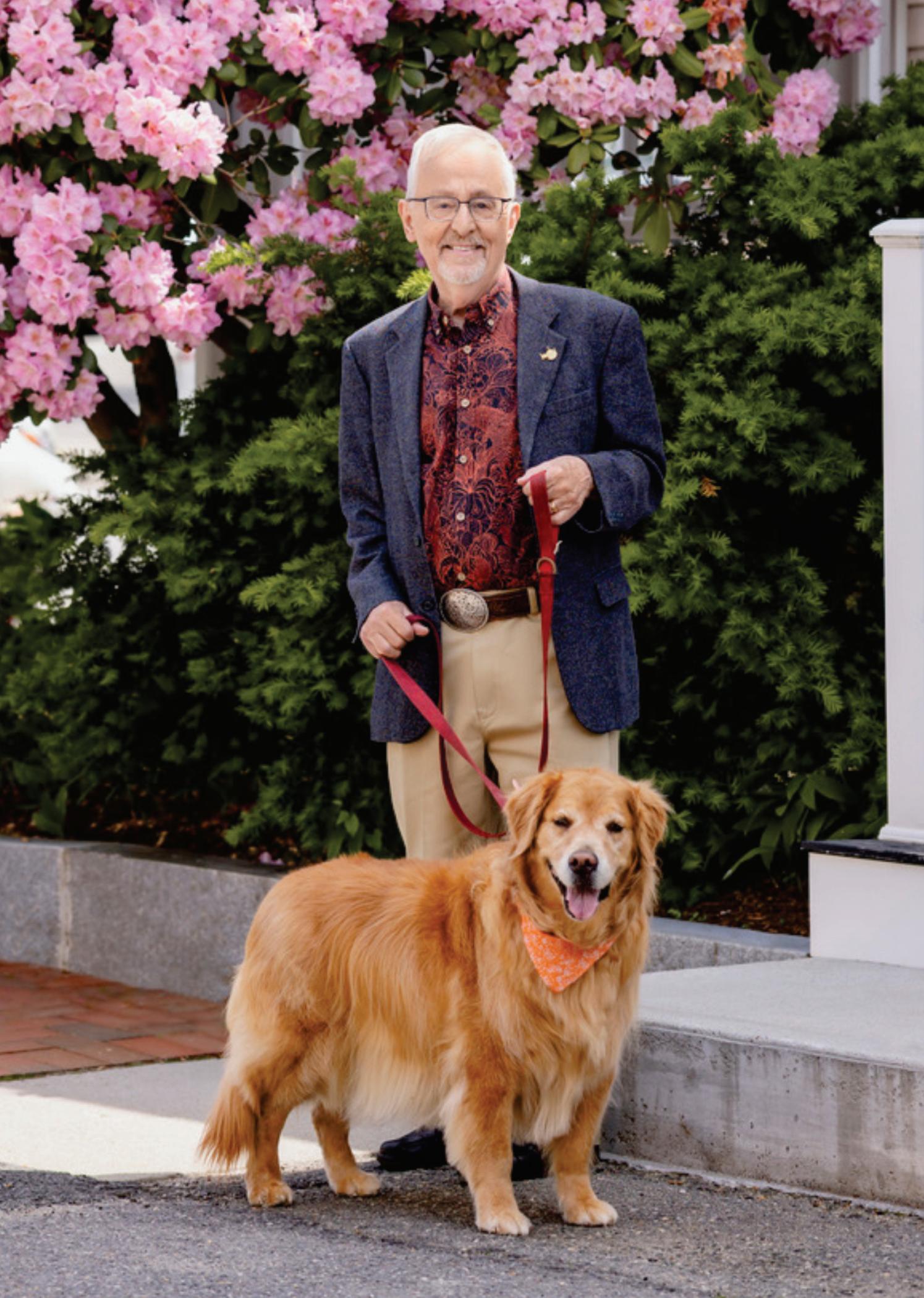
T H E S I G N A T U R E S T O R Y
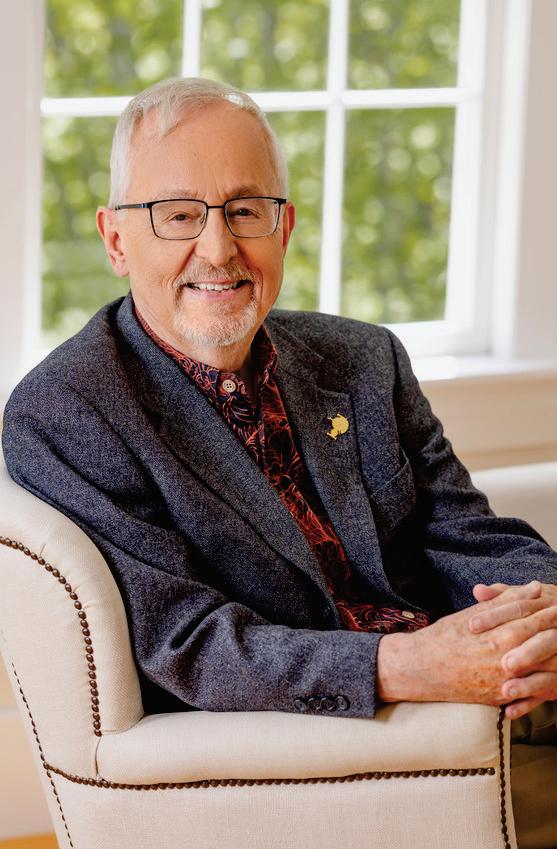
Prof.RichardC.Larson,arenownednameinthefield of Operations Research (OR), has consistently stood at the frontier of innovation and real-world application. His decades-long career at the Massachusetts InstituteofTechnology(MIT)reflectsacommitmentnotjust toacademiabuttocreatingmeaningfulimpactacrosssectors including urban planning, policing, education, and public systems.Oftenreferredtoas"Mr.QueuingTheory,"Larson’s workgoesbeyondtheoreticalmodels;itisdeeplyembedded intheoperationalrealitiesofcomplexsystems.
OperationsResearch,inLarson'sview,representsthephysics of the everyday world. From managing traffic flow and optimizingsupplychainstoreducingwaittimesinqueuesand improvingpolicingefficiency,thediscipline'sbreadthmirrors its relevance. Throughout his journey, Larson has demonstrated how rigorous mathematical modeling, when combined with a deep understanding of societal needs, can resultintransformativesolutions.
His influence reaches far beyond academic corridors ThroughinitiativeslikeMITBLOSSOMSandhisworkwith the Boston Police Department, Larson has showcased how OR can be a vehicle for social good.As an educator, author, and applied researcher, he has inspired generations of students and professionals to think analytically and act pragmatically,bridgingthegapbetweentheoryandpractice.
Prof. Larson often describes Operations Research as a discipline that appealed to his affinity for physics and problem-solving. While biology never quite resonated with him, physics offered a structured, analytical approach to understanding the world a perspective he later found mirrored in Operations Research. He was introduced to the fieldbyhisMITfacultyadvisor,Prof.AlvinW Drake,andthe connectionwasinstantaneous.
Duringhisgraduatestudies,apersonalencounterwithcrime ledhimtofocushisresearchonpolicepatrols.Supportedby Professors Drake and Philip M. Morse, Larson immersed himself in police work, spending over 200 hours on patrol
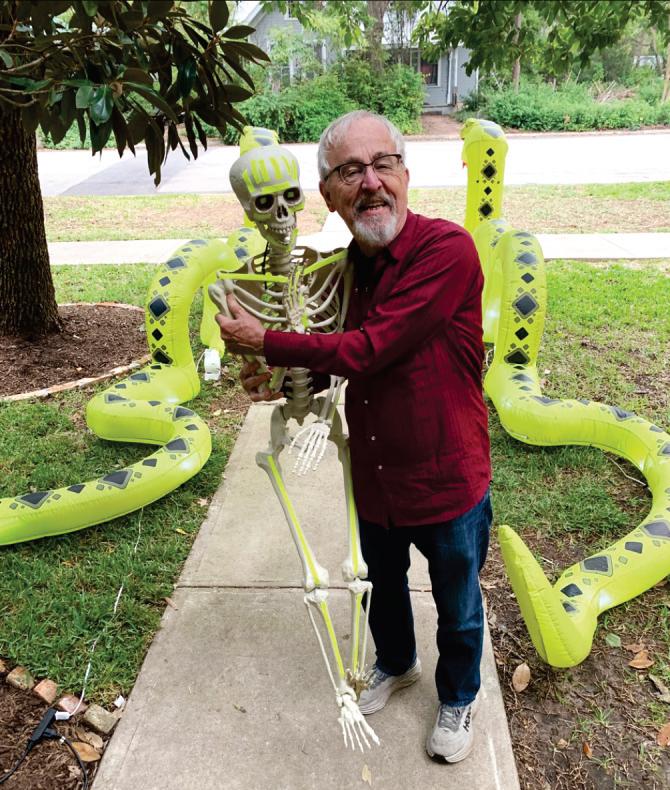
withtheBostonPoliceDepartment.Thishands-onexperience fueled his doctoral research and led to the publication of Urban Police Patrol Analysis, a book that earned him the 1972 Lanchester Prize for Best Publication in Operations Research.
This early recognition not only validated his work but also motivated him to expand his efforts in the public sector. His ability to translate theoretical constructs into real-world applicationsquicklybecameahallmarkofhisacademicand professionaljourney
Throughout his tenure at MIT, Prof. Larson emphasized the symbiosis between academic research and practical impact. He often stated that there is no conflict between the two; rather,theyaremutuallyreinforcing.Inalignmentwiththis
Throughout his career, Larson remained focused on probabilistic modeling rather than optimization algorithms.”

philosophy, he founded Public Systems Evaluation, Inc., a non-profit consulting firm that later became the for-profit ENFORTHCorporation.
Every Friday, Larson dedicated himself to ENFORTH, guiding students in applying classroom knowledge to fieldbased challenges. Many of these projects served as the foundation for graduate theses, combining academic rigor withhands-onexperience.Thefirmworkedextensivelywith city agencies and public service providers, delivering solutionsgroundedinORprinciples.
Far from competing with MIT's objectives, this initiative enrichedtheeducationalexperience,providingstudentswith a laboratory for testing theories and seeing immediate realworldresults.Itwasacompellingmodelofhowacademiacan serveasanincubatorforscalable,practicalinnovations.
One of Larson's most fulfilling ventures has been the establishmentofMITBLOSSOMS(BlendedLearningOpen Source Science or Math Studies) in 2008. As one of the internet's earliest open-source educational platforms, BLOSSOMS has democratized access to quality STEM educationthroughfree,engagingvideolessons.
With content available on YouTube and other platforms, BLOSSOMS reaches a global audience, extending MIT's educational ethos far beyond its campus. Larson credits the program’ssuccesstothededicationofhisteamandremains proudofitscontinuedimpactonlearnersworldwide.
Inparallel,healsoservedasco-directorofMIT’sOperations Research Center (ORC), an interdisciplinary hub that nurtures innovation in modeling and optimization. Though nothousedwithinaspecificdepartment,ORCremainsavital partofMIT'sacademicinfrastructure,thanksinlargepartto Larson’svisionaryleadership.
Prof.LarsonfrequentlyemphasizesthatOperationsResearch has always been rooted in solving tangible problems. He draws attention to early milestones, such as A.K. Erlang's 1919 queueing theory in telecommunications and the developmentofSearchTheoryduringWorldWarII.
These foundational theories emerged not from abstract curiositybutfromurgent,real-worldneeds.Erlang'smodels addressed the growing complexity in telephone networks, while wartime Search Theory was vital for locating enemy submarines. According to Larson, this lineage underscores that OR is most powerful when applied to pressing societal challenges.
His own work, ranging from urban policing to healthcare systems,reflectsthislegacy.Hehasmaintainedthatatheory, howeverelegant,holdslittlevalueunlesstestedagainstreal-
In retirement, Larson continues to champion analytical thinking for a broader audience. His latest book, MODEL THINKING For Everyday Life: How to Make Smarter Decisions (2023), aims to equip readers with structured frameworks for everyday problem-solving.”

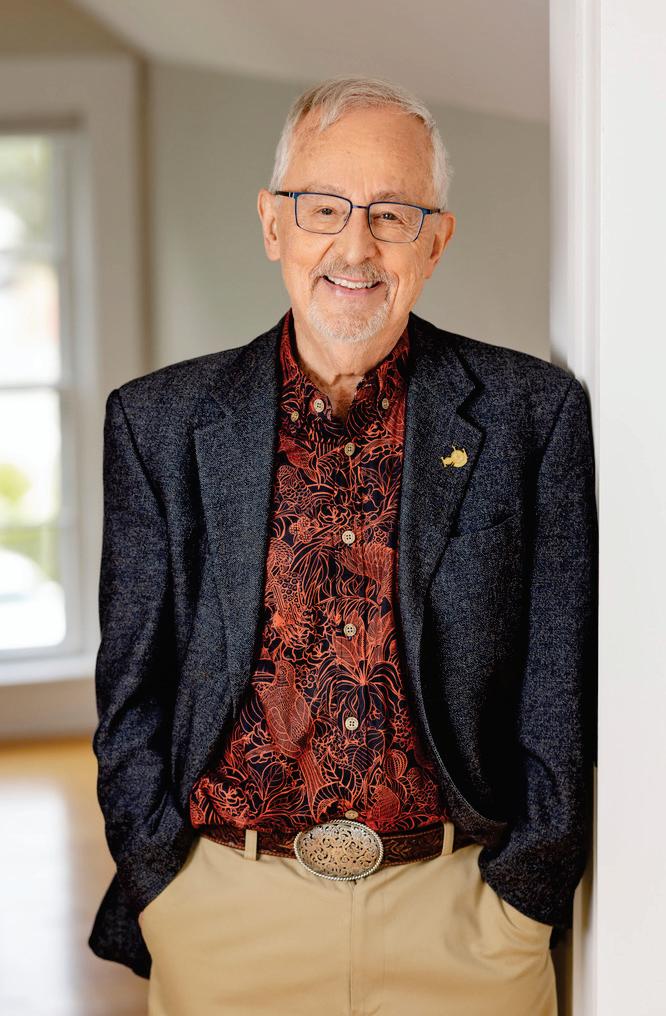
world conditions. This ethos has guided his research methodologyandhismentorshipofstudents.
AFocusedApproachinanExpandingField
AcknowledgingtheexpansivenatureofOperationsResearch today, Larson notes that it is no longer feasible for one individual to master all its branches.As the field evolves to include everything from machine learning to behavioral analytics,specializationbecomesnecessary.
Throughout his career, Larson remained focused on probabilistic modeling rather than optimization algorithms. His intellectual passion lies in model development—the process of understanding complex phenomena, conceptualizingthemmathematically,anditerativelyrefining thesemodelsbasedonempiricaldata.
Even in retirement, he continues to explore modeling challenges, underscoring the enduring relevance of foundationalskillsinOR.Hisworkservesasareminderthat while tools and technologies evolve, the core principles of analyticalreasoningremaintimeless.
Prof. Larson’s early accolade—the Lanchester Prize—was justthebeginningofadistinguishedcareer Thisrecognition affirmed the importance of his early research and laid the foundation for future endeavors. Yet, perhaps the highest professionalhonorcamewithhisinductionintotheNational AcademyofEngineering(NAE).
For Larson, membership in the NAE represents a crowning achievement, symbolizing a career spent advancing engineeringandanalyticalsciences.Itstandsasatestamentto his lifelong pursuit of excellence and his commitment to societalimprovementthroughanalyticalrigor
ThoughtLeader,Author,andMentor
Beyond research and teaching, Larson has influenced operations research through literature His co-authored

textbook Urban Operations Research remainsafoundational text, cited extensively and translated into several languages. Usedinacademicinstitutionsandevensomehighschools,the book encapsulates his vision of OR as an applied science rootedinreal-worldproblems.
His approach reflects that of an applied physicist: observe phenomena, construct a model, test and refine it through iterations, and validate it through empirical data. Larson firmly believes that without field exposure, models risk becoming abstract and ineffective He consistently encourages future researchers to engage directly with the systemstheyaimtoimprove.
DirectObservationasaResearchImperative
Larson advises that anyone embarking on an OR project shouldspendtimeattheoperationalsitefromdayone.By
Through initiatives like MIT BLOSSOMS and his work with the Boston Police Department, Larson has showcased how OR can be a vehicle for social good.”

observingprocesses firsthand, speakingtostakeholders,and challenging preconceived notions, researchers can gain insightsthatareoftenabsentindatasets.
ThisprincipleguidedhisworkatENFORTHandshapedhis mentorship of students. He insisted that theoretical models mustbeinformedbyoperationalrealities.Onlythencanthey offerinsightsthatarebothanalyticallyrobustandpractically implementable.
In a world increasingly driven by data, this grounded approachservesasacriticalreminder:numbersgainmeaning onlywheninterpretedincontext.
In retirement, Larson continues to champion analytical thinking for a broader audience. His latest book, MODEL THINKING For Everyday Life: How to Make Smarter Decisions (2023), aims to equip readers with structured frameworksforeverydayproblem-solving.
Published by INFORMS, the book reflects Larson’s aspiration to make model-based thinking accessible to nonspecialists. His goal is to empower individuals from businessprofessionalstoeverydaycitizens—touseanalytical reasoningintheirdecision-makingprocesses.
Media appearances and a recent feature in Times Square through Marquis Who's Who further amplify his message.

These platforms serve not just as personal accolades but as vehicles to promote a culture of informed, data-driven decision-making.
Prof Richard Larson's journey is a case study in how intellectual rigor, when grounded in practical engagement, can shape societies. From police patrol models to global educationalplatforms,hisworkhasleftalastingimprint.
As future generations navigate increasingly complex systems, Larson's message remains relevant: the best solutions arise from the convergence of theory and practice, guidedbycuriosity,groundedinreality,anddrivenbyadesire tomaketheworldabetterplace.




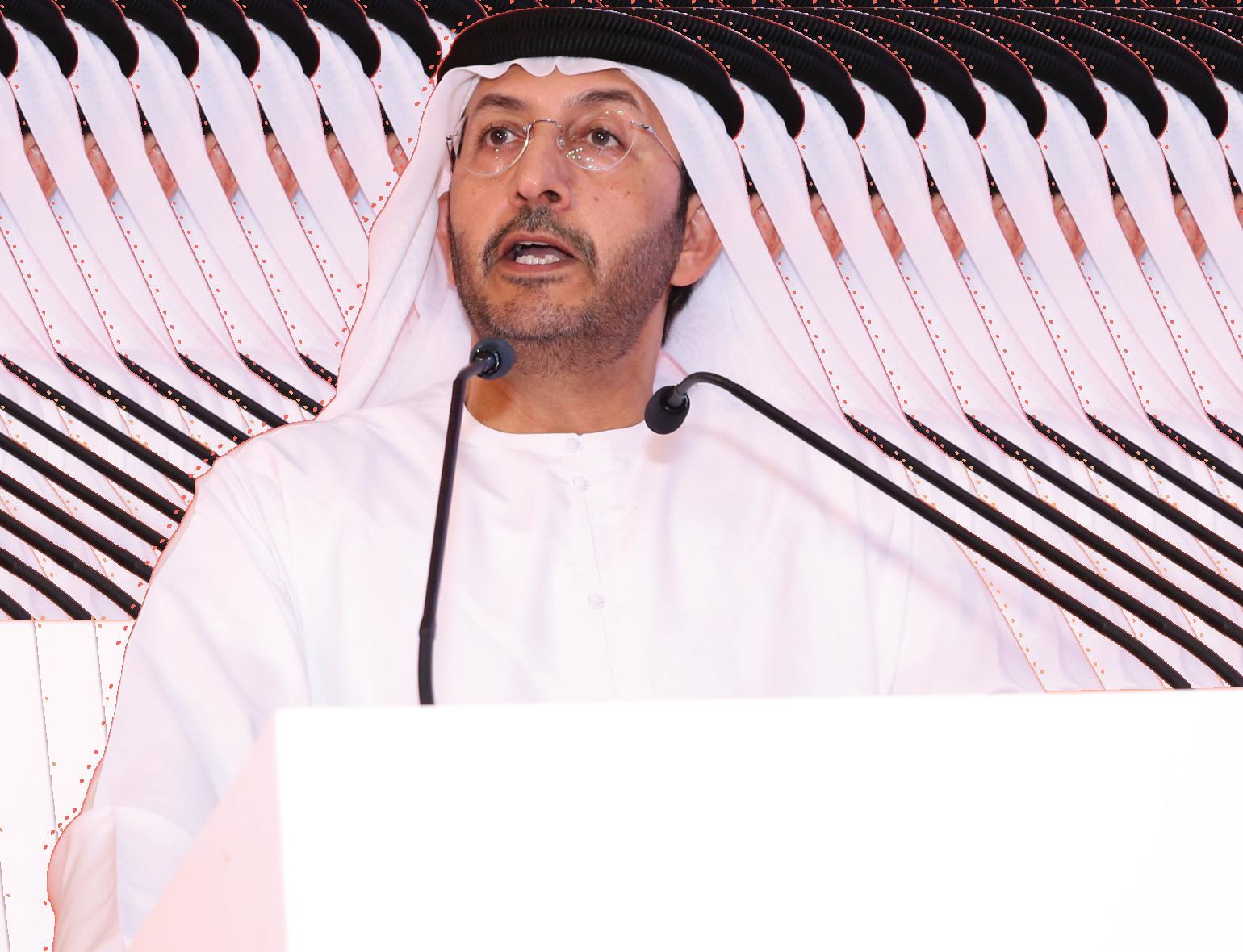
In today’s fast-paced economy, the journey from startup to scale-up is not simply about expansion it’s about transformation.Growth-stagecompanies,typicallythosethat havemovedbeyondtheearlystartupphasebutarenotyetmature enterprises,existinavolatileyetfertilespace.Theyfacetheunique challenge of sustaining momentum while navigating increased complexity Attheheartofthisevolutionisleadership.Andnotjust any kind, but leadership rooted in innovation, adaptability, and resilience.
These companies teach us powerful lessons—how to lead amid ambiguity,buildculturesthatthriveinmotion,andmakedecisions thatbalancelong-termvisionwithshort-termagility.
Lesson1:InnovationIsn’taDepartment,It’saCulture
For growth-stage companies, innovation isn’t siloed to an R&D team or marketing brainstorms—it’s a mindset embedded into everylayeroftheorganization.Successfulleadersunderstandthat innovation must be democratized. Leaders didn’t just tolerate failure—theystructuredsystemstolearnfromit.Employeeswere empowered to question assumptions, test hypotheses, and take calculatedrisks.
Thisinnovativecultureisadirectreflectionofleadershipbehavior When leaders model curiosity, embrace failure as feedback, and prioritizeexplorationoverperfection,theycultivateateamthatcan adaptandevolveatscale.
Lesson2:AdaptabilityistheNewStability
Ifthelastdecade—andespeciallythelastfewyears—haveshown anything, it’s that rigid business models and static thinking are liabilities.Growth-stagecompaniesexistinflux.


Market demands shift, funding climates change, and competitorsemergeovernight.
Leadership during this stage requires what some call “strategic elasticity.” This means having a clear north star while being flexible about how to reach it. Leaders must continuously re-evaluate product-market fit, reconsider goto-marketstrategies,andstayattunedtocustomerneeds.
Adaptability doesn’t mean chasing trends—it means having the humility to shift when the data demands it and the foresighttochangebeforeyou’reforcedto.
Lesson3:VisionAloneisNotEnough—ClarityisKey
Many early-stage companies are fueled by a bold, transformativevision.Butasteamsgrow,sodoestheriskof misalignment. Leaders must translate vision into clear, actionableprioritiesthateveryteamcanownandexecute.
Growth-stagecompaniesoftensufferfrom“visiondilution,” where rapid hiring and multiple product lines can blur strategic focus. Great leaders in this stage act as translators, consistently reiterating the ‘why’ behind the work. They ensure the mission is more than a slide—it becomes a daily decision-makingcompass.
This clarity fosters autonomy When team members understand the overarching goals, they can make faster, smarter decisions without needing top-down direction for every task. That’s how startups scale sustainably—through empoweredexecution.
Lesson4:LeadershipMeansBuildingLeaders
Inagrowth-stagecompany,leadershipcannotbecentralized. Ahandfulofexecutivescannotmanageanexpandingteamor scale culture alone Successful leaders focus less on controlling outcomes and more on cultivating leadership in others.
This involves mentoring mid-level managers, encouraging ownership, and creating feedback-rich environments Growth-stage CEOs often shift from being the primary decision-makertobecomingacoachandcontext-setter They enableotherstolead,innovate,andownoutcomes.
Lesson5:ResilienceistheBedrockofGrowth
Growth is not linear It comes with setbacks, missteps, and moments of doubt. Whether it’s a failed product launch,
customer churn, or operational bottlenecks resilient leadership is what allows companies to weather storms and emergestronger
This resilience is both personal and organizational. Leaders must model emotional intelligence and transparency, especially during uncertainty A leader who acknowledges challenges while inspiring belief fosters trust and cohesion. It’s this trust that fuels teams through crunch periods and difficultpivots.
Many leaders also cite the importance of “failing forward”—treating every setback as a data point, not a dead end.Growth-stagecompaniesarenotexpectedtobeperfect, buttheyareexpectedtoberelentlesslyiterative.
Lesson6:CultureisYourOperatingSystem
Processes change Products evolve But culture, once established,becomesthemostpowerfuloperatingsystemfor agrowingcompany Itdictateshowdecisionsaremade,how conflictishandled,andhowsuccessisdefined.
Strongleadersrecognizethatcultureisn’tjustaboutperksor valueswrittenonawall.It’saboutbehavior,consistency,and alignment. They take active steps to hire not only for skills, but for shared values and learning agility They also listen—ensuringcultureevolveswiththecompany’sgrowth ratherthanbeingleftbehind.
As companies scale, leadership must protect the essence of the early team’s ethos while being open to the diversity and complexity that comes with expansion. This cultural stewardshipisacriticalleadershipfunctionthatdriveslongtermsuccess.
Growth-stage companies are the crucibles where future industry giants are forged. They are environments of high stakes, high speed, and high potential. The leaders who succeed in this space are not those who cling to traditional powerstructuresorfixedroadmaps,butthosewhoarewilling tolearn,listen,andleadwithclarityandcourage.
To innovate is to challenge the status quo. To adapt is to remainrelevant.Tothriveistoleadwithamindsetthatsees change not as a threat, but as a constant opportunity. In the storiesofgrowth-stageleaders,wefindnotjustaplaybookfor business—butaphilosophyforresilient,adaptiveleadership inaworldthatrefusestostandstill.





Gonearethedayswhenleadershipwassynonymous with hierarchy, authority, and command-andcontrol approaches Today, the very idea of leadership is being radically redefined. In the 21st century, successisnolongermeasuredsolelybyprofitsorpositional power—it’s gauged by influence, impact, and authenticity. Leadership is evolving from rigid systems to dynamic ecosystems where purpose, empathy, agility, and innovation driveperformance.
This shift isn't accidental. It's the result of social change, technological advancement, intergenerational workforce dynamics, and an increasing demand for inclusivity, transparency, and accountability. Leadership today is less about being followed and more about empowering others to lead.
EmotionalIntelligence:TheLeadershipSuperpower
Technicalexpertiseandstrategicthinkingmatter,butthey’re nolongersufficient.Emotionalintelligence(EQ)—theability to understand and manage one’s own emotions and those of others—isnowacornerstoneofeffectiveleadership.
Leaders with high EQ are empathetic communicators, resilientunderpressure,andadeptatconflictresolution.They createpsychologicallysafespacesthatenableopendialogue, diversity of thought, and true collaboration. In the age of burnout, disengagement, and rapid change, the emotionally intelligentleaderdoesn’tjustmanage—theyinspire.
AgilityandAdaptability:TheNewCurrency
The pace of change in the 21st century is unprecedented. Market disruptions, global crises, and technological transformations demand leaders who can pivot quickly Agility—the ability to learn, unlearn, and relearn—is a definingfeatureofcontemporarysuccess.
Adaptive leaders embrace experimentation, fail fast, and iterate often. They lead through uncertainty by fostering cultures that value learning over perfection Instead of reactingtochange,theyanticipateit,reframeit,andharnessit foropportunity
FromAuthoritytoInfluence
Modern leadership is less about control and more about influence.Indecentralized,digital-firstenvironments,power is no longer a function of proximity or presence. It’s about credibility,collaboration,andclarity
Influentialleadersareconnectors.Theycommunicateacross silos, leverage networks, and elevate the voices of others. Theyunderstandthatleadershipisnotasoloact—it’sateam performance. Their impact is not measured by how many peoplereporttothem,butbyhowmanyareinspiredbythem.
InclusiveLeadership:AMandate,NotaChoice
Diversity and inclusion are not buzzwords they're imperatives. Today’s leaders must champion inclusivity not onlytoreflectethicalvaluesbuttofosterinnovation.Diverse teams outperform homogeneous ones, but only when inclusivityisgenuineandsystemic.
Inclusive leaders actively dismantle barriers, question bias, and promote equity They lead by listening, valuing lived experience, and ensuring that every voice is heard Leadershipinthe21stcenturymeanscreatingenvironments whereeveryonehasaseatatthetable—andtheconfidenceto speak.
DigitalFluencyandTech-Savviness
While leadership is deeply human, the digital revolution demands tech-savvy stewardship. Leaders don’t need to be coders or data scientists, but they must understand the tools shapingtheirindustries—fromAIandblockchaintoanalytics andautomation.
Digital fluency allows leaders to make informed decisions, drive innovation, and align technology with mission. Moreover, it sets a tone for lifelong learning and digital literacy across organizations—key ingredients for future resilience.
In an age of information overload and instant scrutiny, integrity is not optional.Transparency, ethical behavior, and consistency form the bedrock of modern leadership credibility Publictrustishardtoearnandeasytolose.
Today’s most respected leaders lead with integrity not because it’s expected, but because it’s essential. They own their mistakes, communicate with honesty, and prioritize long-termreputationovershort-termwins.Indoingso,they buildorganizationsthatstandthetestoftime.
Perhaps the most radical shift is that leadership is no longer confined to the top. The 21st century celebrates distributed leadership where initiative, insight, and ownership are shared across teams and communities. Everyone is a leader, andleadershipisapractice,notaposition.
The best leaders today don’t create followers; they create more leaders. They mentor, coach, and empower others to thinkcriticallyandactcourageously Theydon’tjustfocuson outcomes—theyinvestinpeople.
Conclusion:AReimaginedLegacy
Asweredefinewhatsuccessmeansinleadership,thequestion becomes not “How powerful are you?” but “How impactful areyou?”Trueleadersofthiserawillberememberednotfor the empires they built, but for the lives they touched, the systemstheytransformed,andthefuturestheymadepossible.
Leadershipinthe21stcenturyisacallingtoservewithclarity, compassion, and courage. It’s about showing up with intention, standing up for values, and lifting others as you lead.Inthisera,themostsuccessfulleadersarenotthosewho climb the highest—but those who rise while helping others risewiththem.


